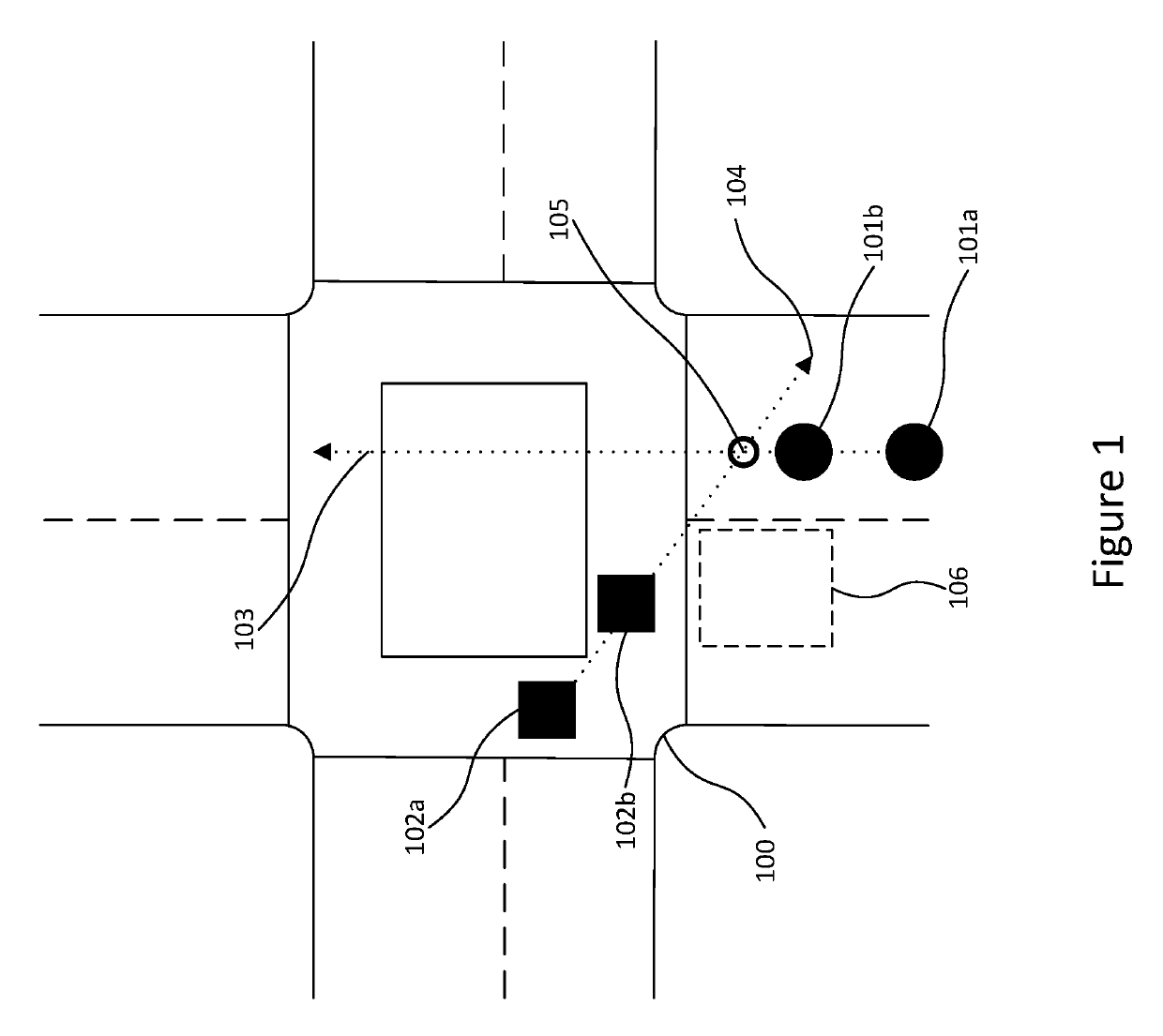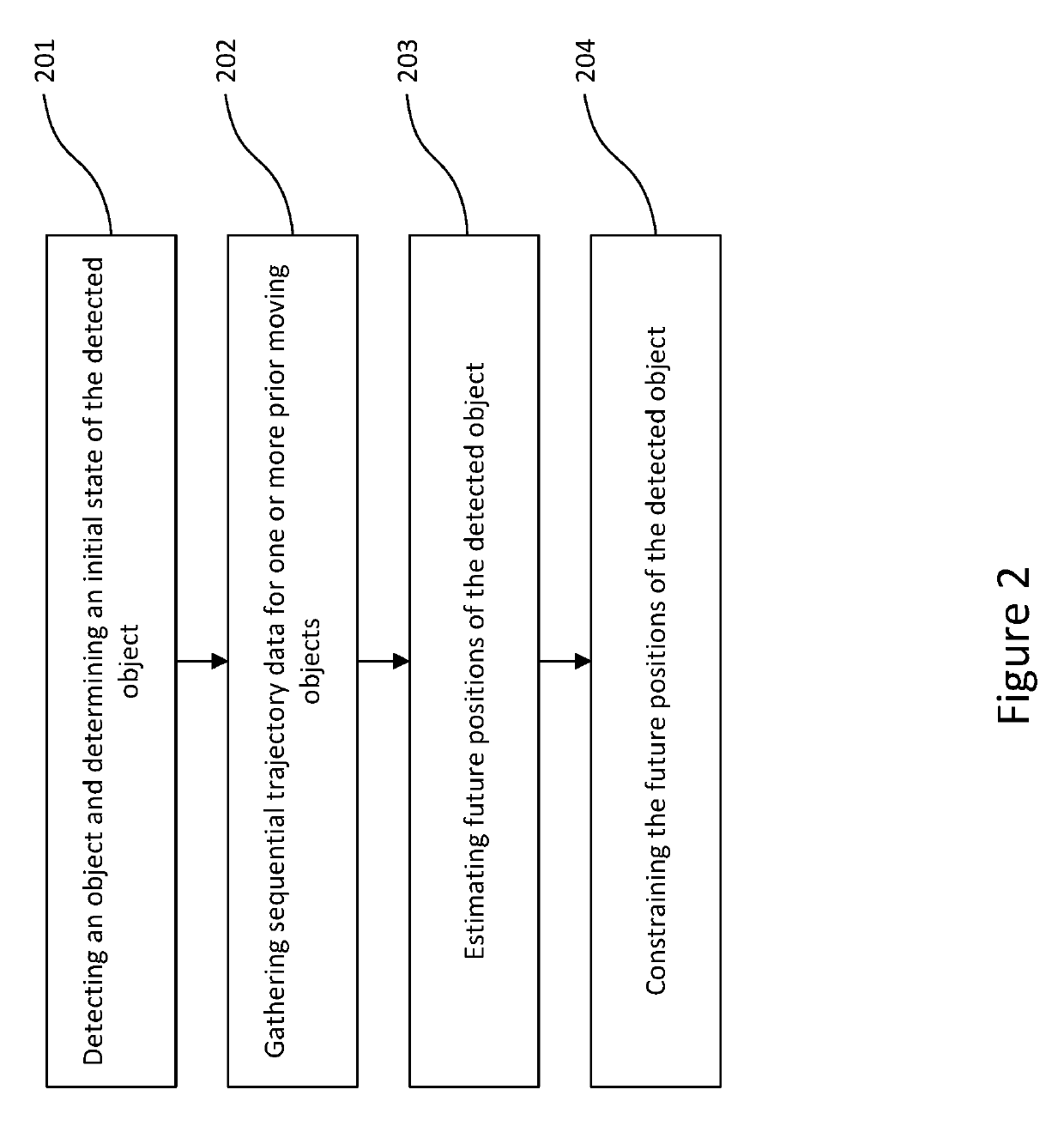Vehicle tracking
a technology for vehicles and vehicles, applied in the field of vehicles, can solve the problems of unreliable prediction, inability to predict the movement of vehicles in complex scenarios, and significant challenges in city traffic, and achieve the effect of less efficien
- Summary
- Abstract
- Description
- Claims
- Application Information
AI Technical Summary
Benefits of technology
Problems solved by technology
Method used
Image
Examples
Embodiment Construction
[0043]FIG. 1 depicts one of the problems seen by current methods of predicting future motion. More specifically, the illustration relates to motion models that rely on linear extrapolation of motion data.
[0044]The figure shows a bird's eye view of a four-way road intersection 100. A first vehicle 101 is depicted approaching the intersection. The position of the first vehicle at a first time, t, is shown as 101a and the position of the first vehicle ata second time, t+1, is shown as 101b. The trajectory of the first vehicle is indicated as a straight path 103.
[0045]A second vehicle 102 is also depicted in the figure. The second vehicle is seen mid-way through the intersection at the first time, t, shown as 102a and the second time, t+1, shown as 102b. Although in real-world scenarios, the position on the second vehicle is likely to be in the area indicated by 106, using the linear motion model, the system assumes the second vehicle is traversing along a second straight path 104. Acco...
PUM
 Login to View More
Login to View More Abstract
Description
Claims
Application Information
 Login to View More
Login to View More - R&D
- Intellectual Property
- Life Sciences
- Materials
- Tech Scout
- Unparalleled Data Quality
- Higher Quality Content
- 60% Fewer Hallucinations
Browse by: Latest US Patents, China's latest patents, Technical Efficacy Thesaurus, Application Domain, Technology Topic, Popular Technical Reports.
© 2025 PatSnap. All rights reserved.Legal|Privacy policy|Modern Slavery Act Transparency Statement|Sitemap|About US| Contact US: help@patsnap.com



